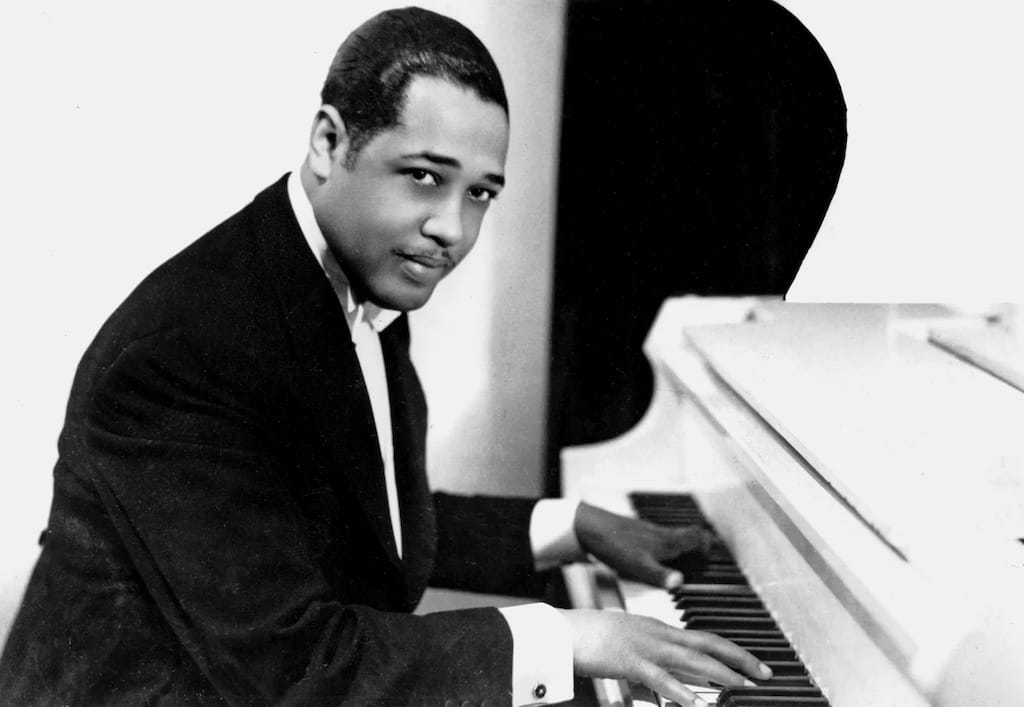Duke Ellington: The Jazz Genius and His Legacy
Duke Ellington’s legacy as a jazz composer, bandleader, and cultural icon reshaped American music, blending jazz sophistication with social impact. His inventive compositions and charismatic leadership continue to inspire generations in jazz and beyond.

Edward Kennedy "Duke" Ellington remains one of the most celebrated figures in jazz, a composer, bandleader, and pianist whose career spanned over fifty years. Born in Washington, D.C., in 1899, Ellington’s rise to prominence paralleled the evolution of jazz itself, from a marginal genre into a widely respected art form. His sophisticated compositions and charismatic presence elevated jazz to new heights, while his influence rippled across generations of musicians and into American cultural history.
Early Life and Influences
Ellington’s family background was marked by middle-class stability and a love for music. His parents were both pianists, and his early exposure to music from church, theatre, and local bands in Washington, D.C., set the stage for his eventual career. Despite early aspirations to become a painter, he gravitated to the piano, finding his own voice through the vibrant jazz scene blossoming in D.C. and Harlem. His nickname, "Duke," came from a young age due to his gentlemanly bearing—a fitting moniker for a man who would come to represent sophistication in jazz.
Rise to Fame
In the 1920s, Ellington and his group, the Washingtonians, moved to Harlem and soon became the house band at the famed Cotton Club, where they performed for a decade. Harlem was an epicentre of the Jazz Age, drawing artists, writers, and musicians. The Cotton Club gigs enabled Ellington to hone his style, experiment with compositions, and collaborate with the most talented musicians. His orchestra became known for its distinctive sound—a blend of blues, swing, and highly arranged compositions that highlighted his musicians’ strengths.
During this time, Ellington wrote hits like “Mood Indigo,” “Creole Love Call,” and “It Don’t Mean a Thing (If It Ain’t Got That Swing).” These compositions became jazz standards and helped define the genre’s identity.
Musical Innovations and Style
Ellington’s unique style emerged from his ability to blend various musical forms—classical, blues, and swing—into complex, orchestral jazz pieces. Unlike many jazz musicians of his time who emphasized improvisation, Ellington took a compositional approach to jazz, writing elaborate scores that included specific instructions for his musicians. He treated each member of his orchestra as a unique voice, crafting parts to highlight individual talents, such as the brassy growl of trumpeter Cootie Williams or the lyrical style of saxophonist Johnny Hodges.
His approach to harmony was innovative, combining unconventional chords and modulations with complex rhythms. Many of his pieces, such as “Black, Brown, and Beige,” were extended suites with multiple movements, reflecting his ambition to elevate jazz to a level comparable to classical music. His interest in incorporating African American history and culture into his music also distinguished him from his contemporaries.
Major Works and Contributions
Ellington’s body of work is vast, spanning several thousand compositions. Some of his most significant works include:
- “Mood Indigo” (1930): A landmark piece known for its haunting melody and rich orchestration.
- “It Don’t Mean a Thing (If It Ain’t Got That Swing)” (1931): An anthem for the swing era and a defining piece of jazz.
- “Black, Brown, and Beige” (1943): A three-movement suite that chronicles the African American experience, presented at Carnegie Hall.
- “Sophisticated Lady” (1932) and “In a Sentimental Mood” (1935): Both are beautiful ballads showcasing Ellington’s melodic gifts.
- “Far East Suite” (1966): Inspired by the orchestra’s world tour, blending jazz with Eastern musical themes.
Through these works, Ellington expanded jazz’s vocabulary and displayed its potential as an expressive, complex art form.
The Ellington Effect: Collaboration and the Power of His Orchestra
Ellington’s orchestra became a hallmark of his career, and he famously described his music as the “Ellington Effect.” This term captured how his orchestra, like an extended family, produced a distinctive sound that was greater than the sum of its parts. Musicians like Billy Strayhorn, his close collaborator and arranger, helped create masterpieces such as “Take the ‘A’ Train,” which became the orchestra’s signature tune.
Strayhorn brought a unique harmonic sophistication to Ellington’s music, and together, they formed one of the most prolific partnerships in jazz history. Ellington’s trust in his musicians and his collaborative approach set him apart, nurturing a lasting bond and an atmosphere of creativity that allowed his orchestra to thrive for decades.
Legacy and Cultural Impact
Ellington’s influence transcended music. As one of the few African American bandleaders to gain widespread fame in a racially segregated America, he represented Black excellence and sophistication, challenging stereotypes and becoming a symbol of cultural pride. His success during a time of significant racial tension in the U.S. was a powerful example of resilience and artistry.
Ellington received numerous accolades over his career, including the Presidential Medal of Freedom in 1969 and the Pulitzer Prize posthumously in 1999. His legacy is also seen in the impact he had on other jazz legends—artists like Miles Davis, John Coltrane, and Thelonious Monk all expressed admiration for Ellington’s genius, and his compositions remain fundamental in jazz education today.
Lasting Influence on Jazz and Beyond
Ellington’s influence reached beyond jazz into popular and classical music. His willingness to experiment with different forms and styles inspired musicians across genres, and his works continue to be performed by orchestras, jazz ensembles, and soloists around the world. His approach to jazz as an evolving art form paved the way for subsequent generations of musicians to explore new directions, making him a foundational figure not only in jazz but also in American music as a whole.





